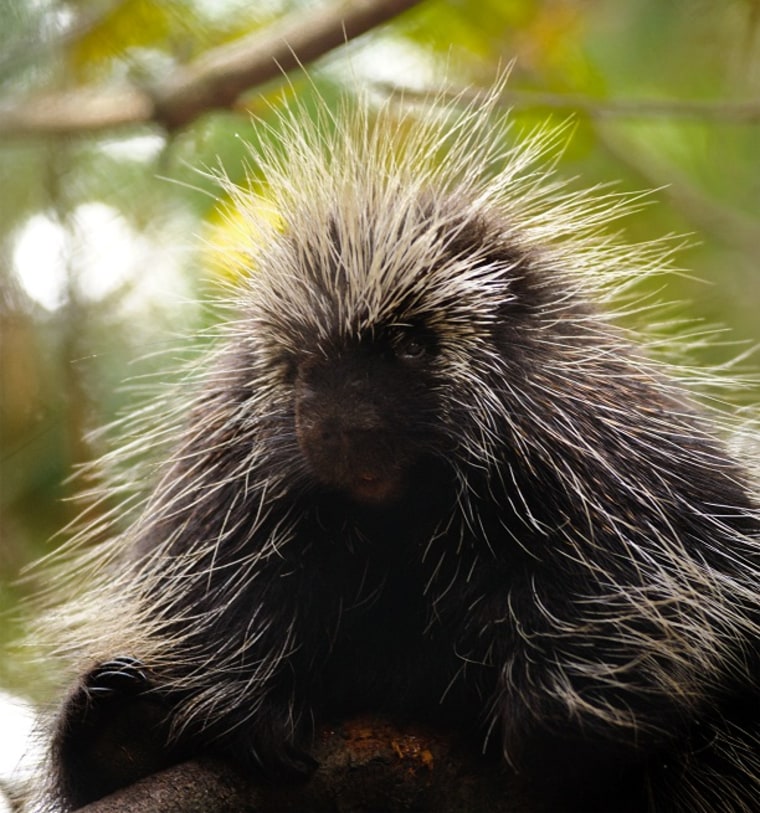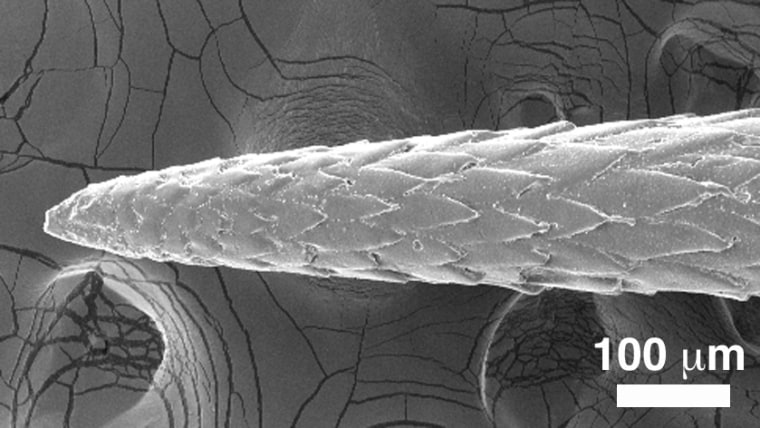
Porcupine quills penetrate the mouths of their would-be attackers with ease and prove extremely difficult to remove. Those qualities are inspiration for a futuristic tape that could help surgeons work faster and ease their patients’ post-operation pain.
“We like to turn to nature for inspiration because evolution is really the best problem solver,” Jeffrey Karp, an associate professor of medicine at Harvard Medical School who led the adhesive’s development told NBC News.
His team’s problem was that an earlier nature-inspired tape used reactive chemicals to mimic the topography and stickiness of gecko feet. While a great adhesive, the chemicals can promote an inflammatory response, said Karp, who also co-directs the Center for Regenerative Therapeutics at Brigham and Women’s Hospital.
That sent them in search of a mechanically interlocking type of adhesive similar to Velcro, which itself was inspired by seed-dispersing burrs.
They stumbled upon the porcupine, Karp said.
“Porcupines are very slow-moving creatures. They don’t run up and try to attack you. They pretty much stand still, so the quills have to penetrate very easily the tissue,” he noted.
He and his colleagues spent the last four years figuring out how this occurs. The results are published today in the journal Proceedings of the National Academy of Sciences.

The tip – top 4 millimeters – of each quill contains backward facing barbs that “were not only responsible for achieving very strong levels of adhesion similar to a fish hook, but they significantly reduce the penetration force, which was a big surprise to us,” Karp said.
The barbs act in a similar fashion to a serrated knife, which makes cutting a tomato, for example, easier than when trying to cut one with paring knife.
That’s because the serrated features “focuses the force at the interface of the tissue, whereas if you don’t have serrated edges there, then the force is absorbed by a much larger volume,” he explained.
Lab tests showed that the barbed quills required 60 to 70 percent less force to penetrate muscle tissue than quills with no barbs. The force to pull them out is four times greater.
The researchers have created a synthetic piece of tape out of plastic based on the porcupine quill. Potential applications include using it as a medical adhesive to hold a hernia mesh in place, for example, instead of tacks.
“A lot of patients who have hernia meshes to treat hernias end up having chronic pain because these tacks just go so far into the tissue so anytime they move, they experience pain, whereas the quills don’t have to penetrate very far,” Karp said.
In addition, sticking together pieces of tissue with the tape instead of staples or stitches is faster. "That could save a lot of time with surgical procedure," he noted. "We all know that the longer the procedure, the greater the complication."
With modification, the same principle of the quill can be used to make needles that penetrate skin with less force.
“If you can reduce the force, you can improve the tactile feedback so you can more accurately place needles,” he said. The trick, he added, is to make the barbs not stick on the way out, perhaps through a swelling mechanism.
Such technology could be in hospitals within three to five years, Karp added. Going forward, their next step is to create degradable system so that they won’t need to be removed post-surgery.
John Roach is a contributing writer for NBC News Digital. To learn more about him, check out his website. For more of our Future of Technology series, watch the featured video below.